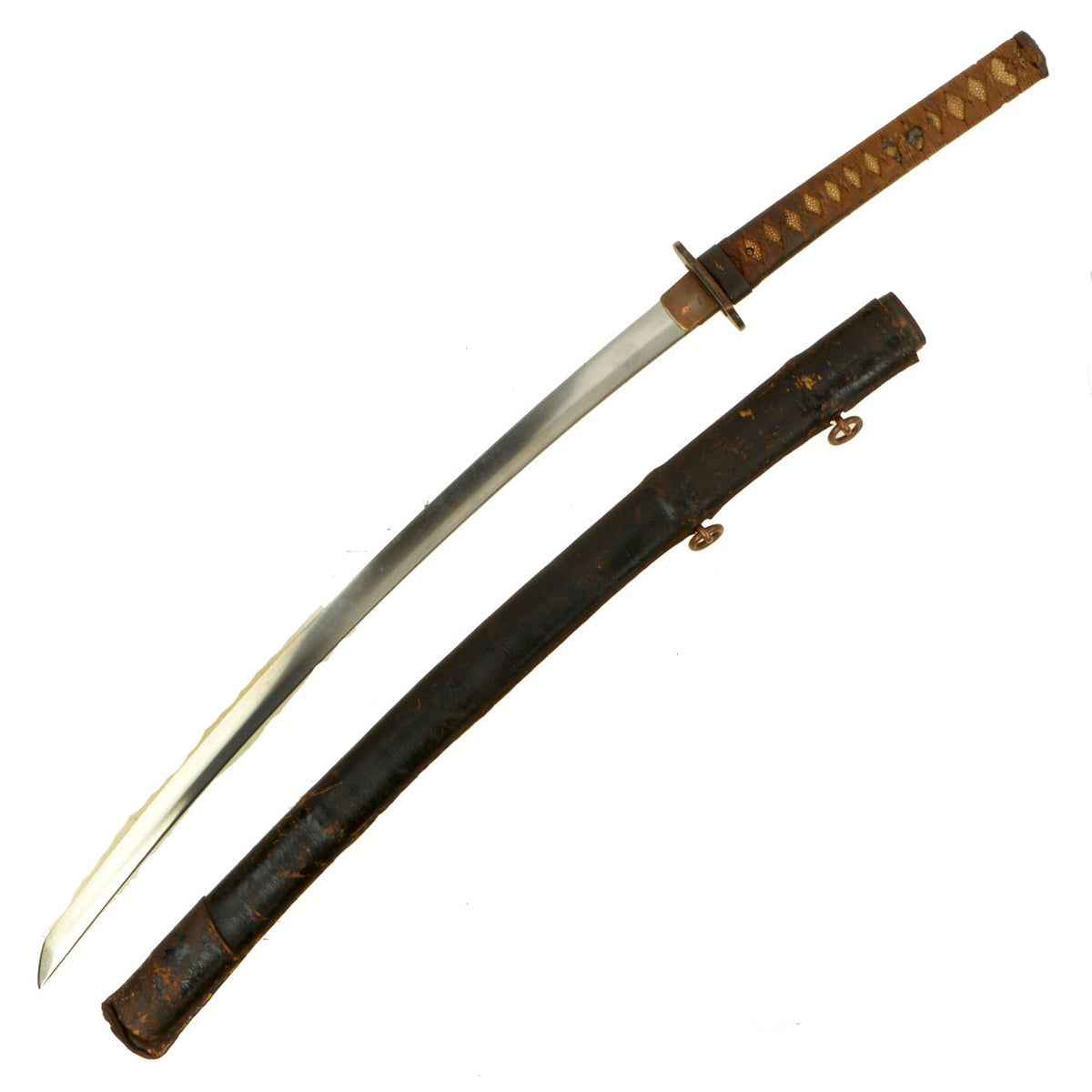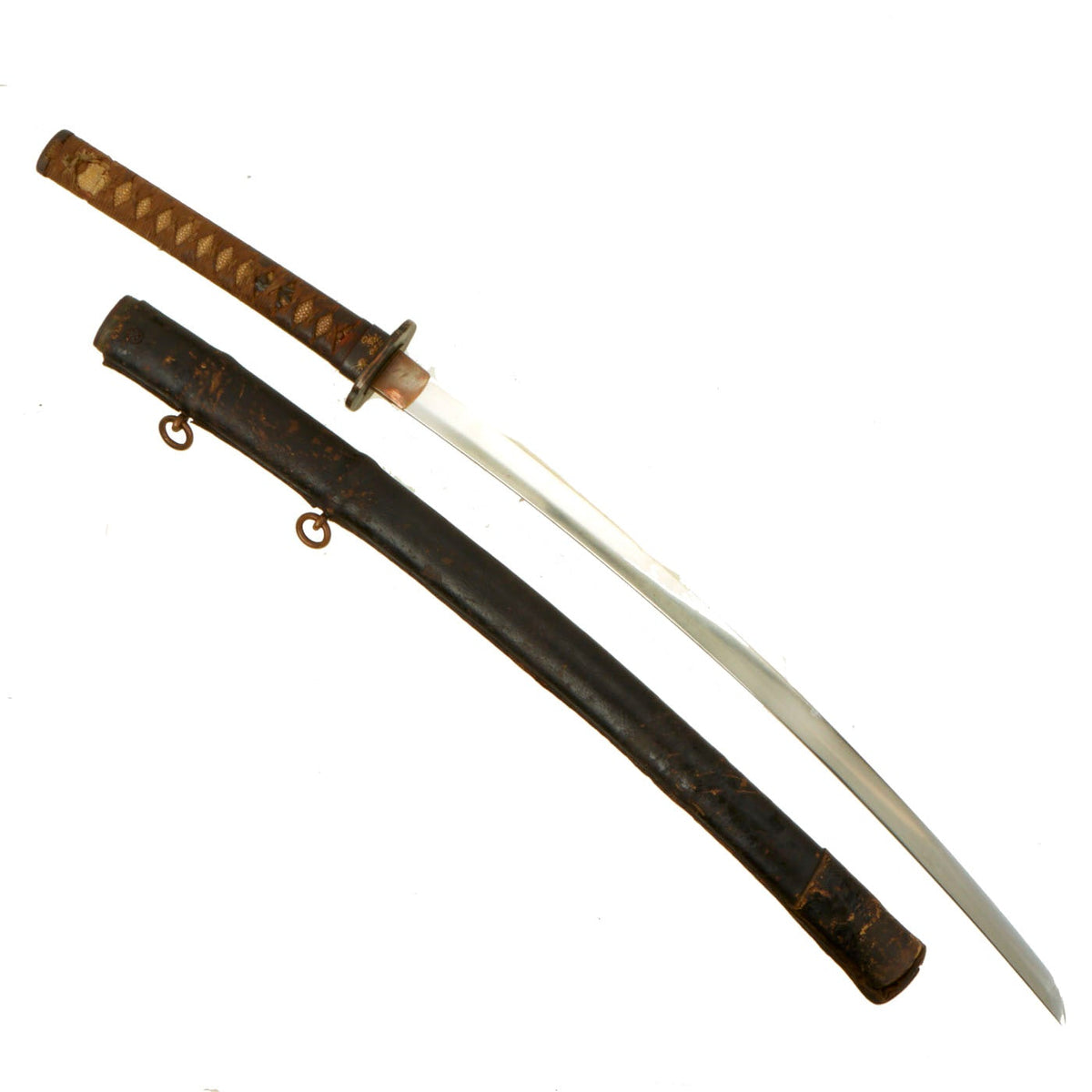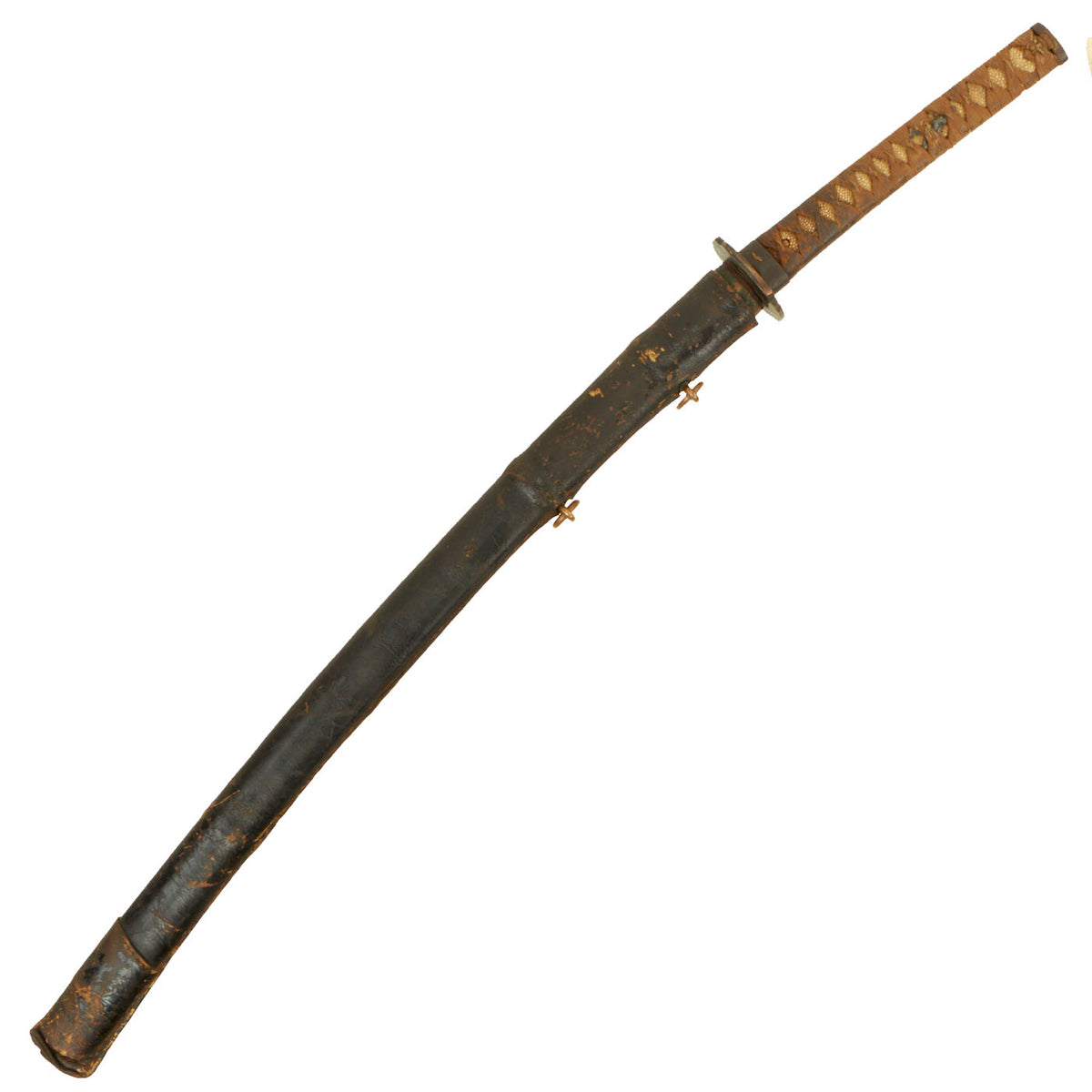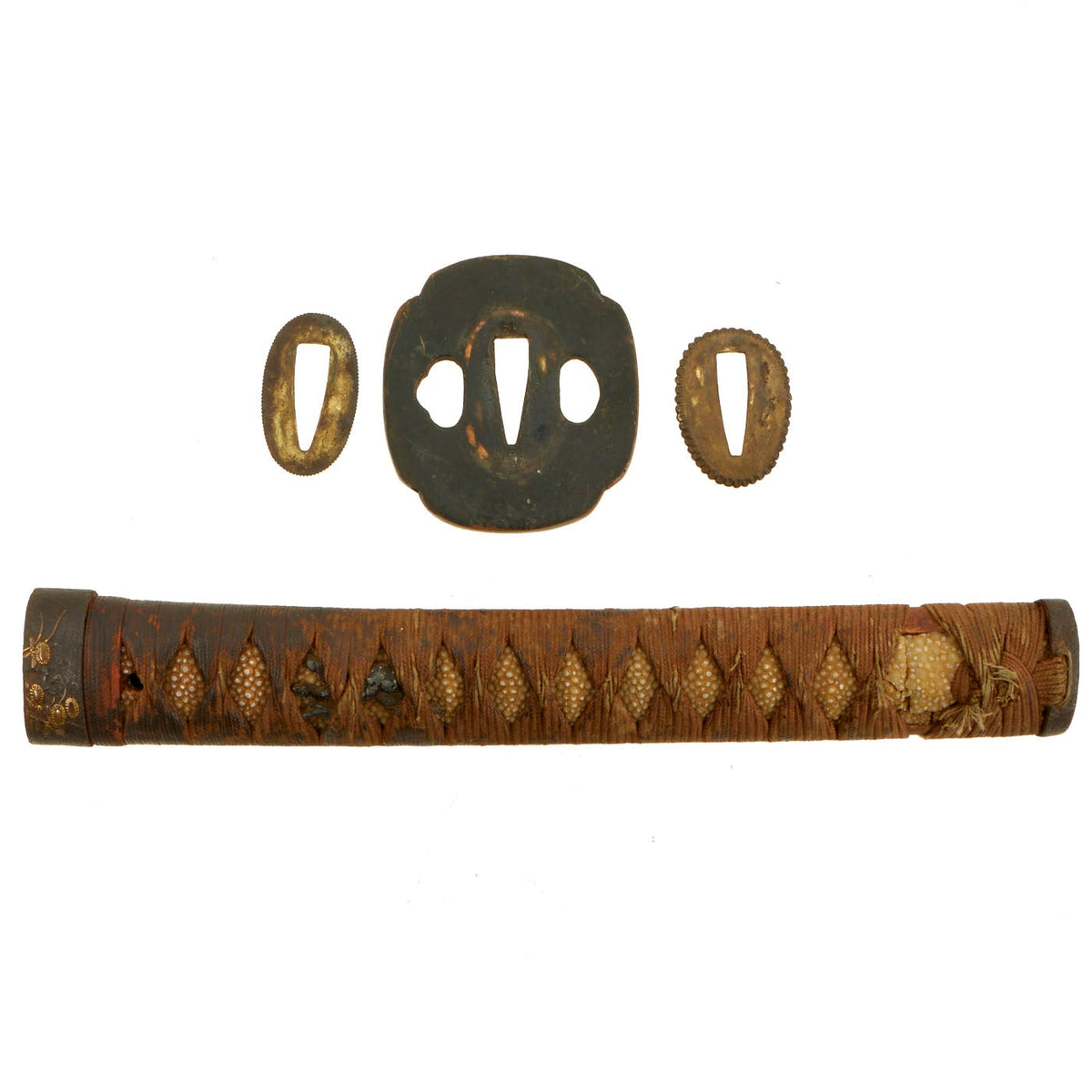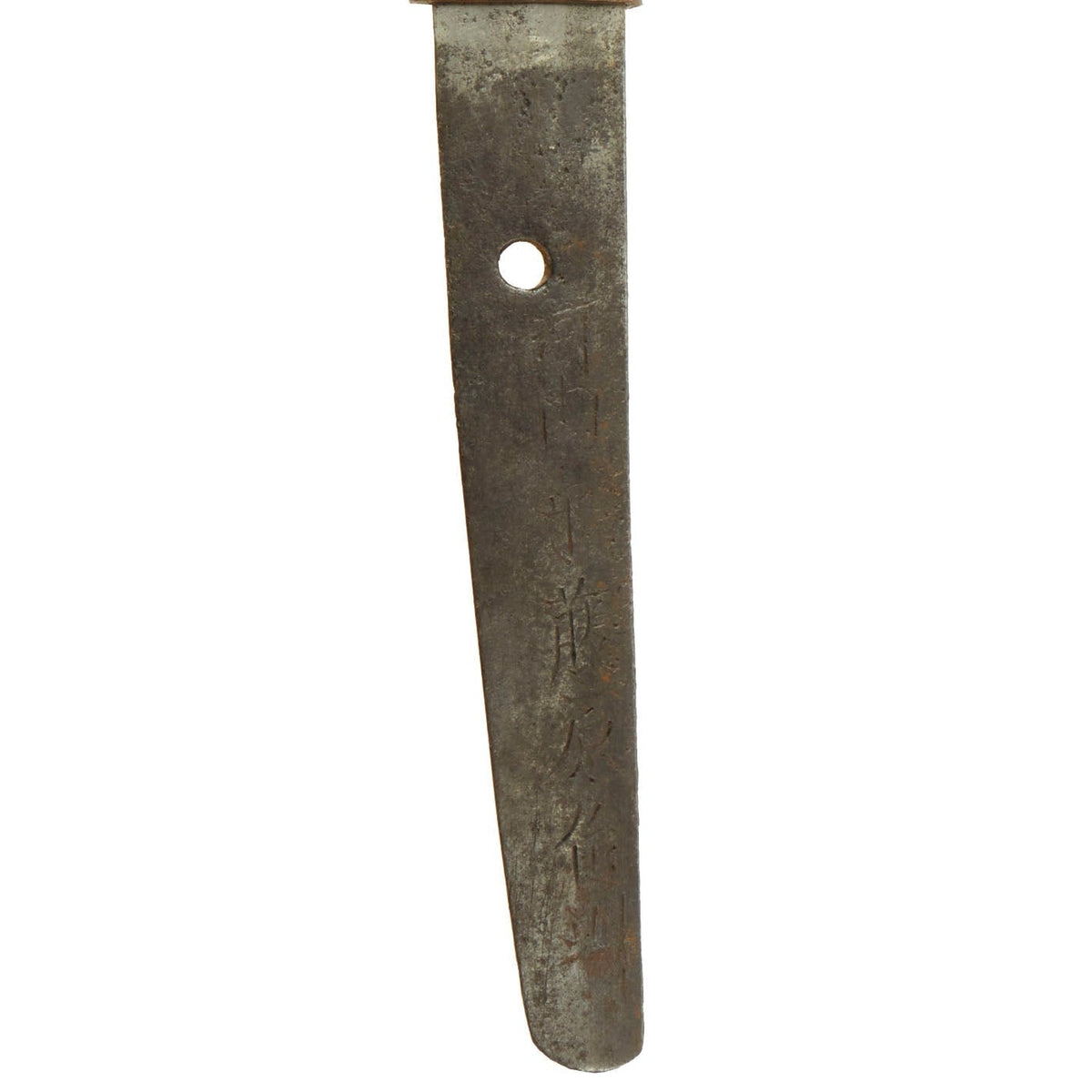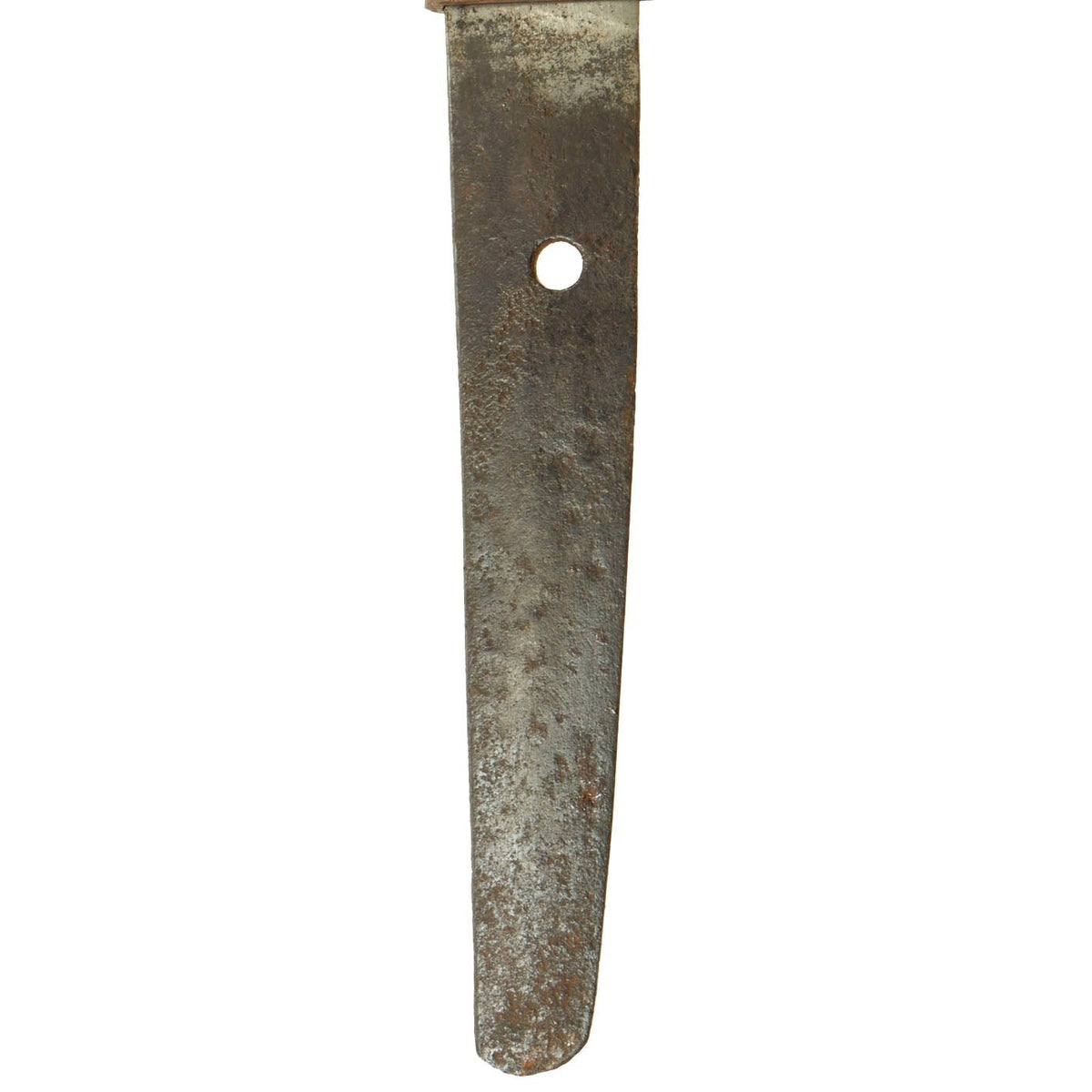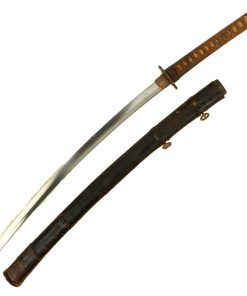Original 17th Century Edo Period Japanese Handmade Wakizashi Short Sword by TOSHINORI with Scabbard Original Items
$ 1.795,00 $ 448,75
Original Item: Only One Available. Wakizashi (脇差 “side inserted / companion sword”) is a general term for a sword between one and two shaku long (30 cm and 60 cm), predominantly made after 1600. Generally it is the short blade that accompanies a katana in the traditional samurai daisho pairing of swords, but may be worn by classes other than the samurai as a single blade, also worn edge up as the katana.
This example dates from the early Edo period (江戸時代, Edo jidai) or Tokugawa period (徳川時代, Tokugawa jidai) of Japanese history. This is the period between 1603 and 1867, when Japan was under the rule of the Tokugawa shogunate and the country’s 300 regional daimyo.
The blade on this example was hand forged at the end of the the 17th century, as indicated by the signature on the tang of the blade: 河 内 守 藤 原 俊 則, which is written top to bottom and reads KAWACHI no KAMI FUJIWARA TOSHINORI. Hawley rates this smith at “15”, though unfortunately there is not much known about them. They worked during the Genroku (元禄) Period from1688-1704. The reigning emperor during this time was Higashiyama-tennō (東山天皇), and the shogun was Tokugawa Tsunayoshi (徳川 綱吉).
This example has most likely been remounted several times, as was common for Japanese blades. This has made the file marks and signature on the tang somewhat faint, however we are confident in our reading of the MEI.
The blade has the following period correct features:
– Folded steel blade (fold lines are evident on the spine and body of the blade)
– hole in the tang is punched and not drilled
– blade is signed on the tang by the maker
– Blade wounds (kizu) or lamination artifacts are present on the blade, only possible on traditionally made examples. These are mostly WARE (lamination lines).
The Blade of this example is 23 inches long, and unfortunately saw much use and cleaning since the last polish. This has unfortunately completely removed the polish, and the geometry of the blade is no longer sharp, especially the SHINOGI (blade ridge), which is now somewhat rounded. This also means that other aspects such as the hamon and hada are no longer visible. The tang (nakago) is of the Futsu 普通 (regular) style with a Haagari (asymmetrical rounded) nakago-jiri. It also has a copper Habaki (blade collar), which is typical of the Edo period. Overall length of this wakizashi is 33 1/4 inches.
The tsuba (cross guard) is made of bronze and is a “mokko gatta” (quince) shaped style, without any decoration. It has both Hitsu-ana (accessory holes) for both the Kozuka (kogatana handle) and kogai (hair ornament). The fuchi (collar) for the tsuka (handle) is iron, as is the Kashira (End Cap), and both have some brass ornamentation in the form of flowers, which match. The stingray (Sa-Me) grip with complete Ito (cloth binding) is worn, but still in good condition. There are lovely horse menuki (grip ornaments) on each side of the tsuka.
The included saya (scabbard) is brass fitted wood, and looks to be late 19th century, possibly Russo-Japanese war era. It has two brass hanger rings, and is covered with a leather scabbard cover, with a snap at the top. This is very similar to the WWII style, so it is also possible that it saw use during WWII, which may explain how the blade got so worn.
A nice Edo Period wakizashi by a known maker, ready to display!
Specifications:
Blade Length: 23″
Overall length: 33 1/4“
Scabbard Length: 25 1/2″
It has been over one thousand years ago that the art of making swords appeared in Japan. The swordsmiths of the time may not have known it but they were creating a legendary sword. The Samurai sword has seen combat in many battlefields. From the early days of the Samurai warrior to the fierce battles in the South Pacific during WWII.
Each hand-made Japanese blade (日本刀 – Nihonto) is unique because it is forged from multiple pieces of folded steel stock. A tremendous amount of work is dedicated to creating these pieces. They were an instrument of war as much as a beautiful artifact to adorn a room.
The traditional Japanese blade and mountings have grown to be one of the most highly desired military antiques.
Fast Shipping with Professional Packaging
Thanks to our longstanding association with UPS FedEx DHL, and other major international carriers, we are able to provide a range of shipping options. Our warehouse staff is expertly trained and will wrap your products according to our exact and precise specifications. Prior to shipping, your goods will be thoroughly examined and securely secured. We ship to thousands clients each day across multiple countries. This shows how we're dedicated to be the largest retailer on the internet. Warehouses and distribution centres can be located throughout Europe as well as the USA.
Note: Orders with more than one item will be assigned a processing date depending on the item.
Before shipping before shipping, we'll conduct a thorough inspection of the items you have ordered. Today, the majority of orders will be delivered within 48 hours. The delivery time will be between 3-7 days.
Returns
The stock is dynamic and we cannot completely manage it because multiple stakeholders are involved, including our factory and warehouse. So the actual stock may alter at any time. It's possible that you may not receive your order once the order has been made.
Our policy is valid for a period of 30 days. If you don't receive the product within 30 days, we are not able to issue a refund or an exchange.
You can only return an item if it is unused and in the same state as the day you received it. You must have the item in its original packaging.
Related products
Uncategorized
Uncategorized
Uncategorized
Uncategorized
Uncategorized
Uncategorized
Uncategorized
Uncategorized
Band of Brothers ORIGINAL GERMAN WWII Le. F.H. 18 10.5cm ARTILLERY PIECE Original Items
Uncategorized
Uncategorized
Uncategorized
Uncategorized
Uncategorized
Uncategorized
Uncategorized
Armoured Fighting Vehicles of the World: AFVs of World War One (Hardcover Book) New Made Items
Uncategorized
Uncategorized
Uncategorized
Uncategorized
Uncategorized
Armored Burgonet Helmet & Polearm from Scottish Castle Leith Hall Circa 1700 Original Items
Uncategorized
